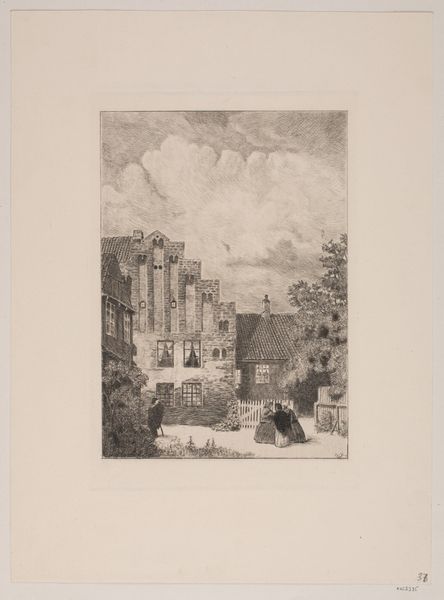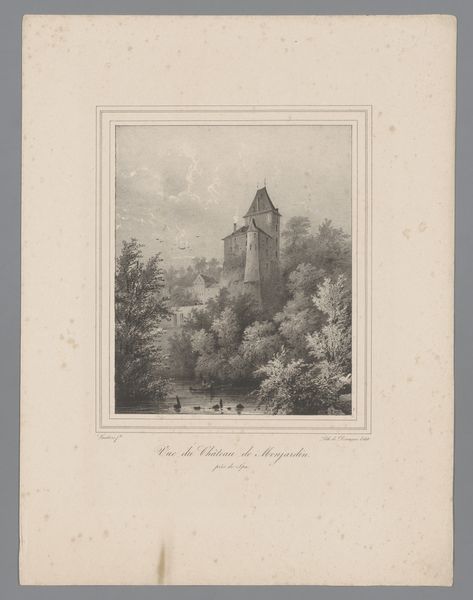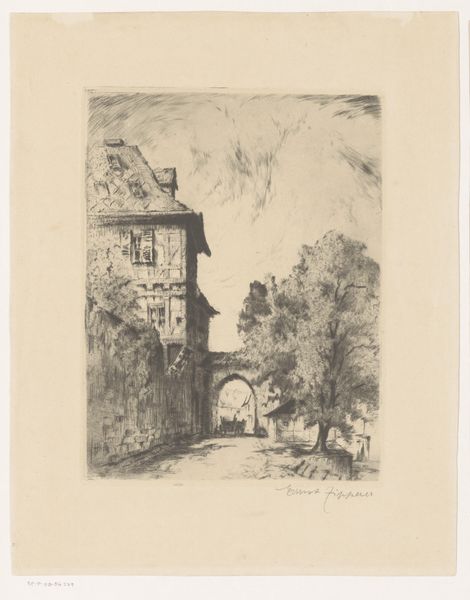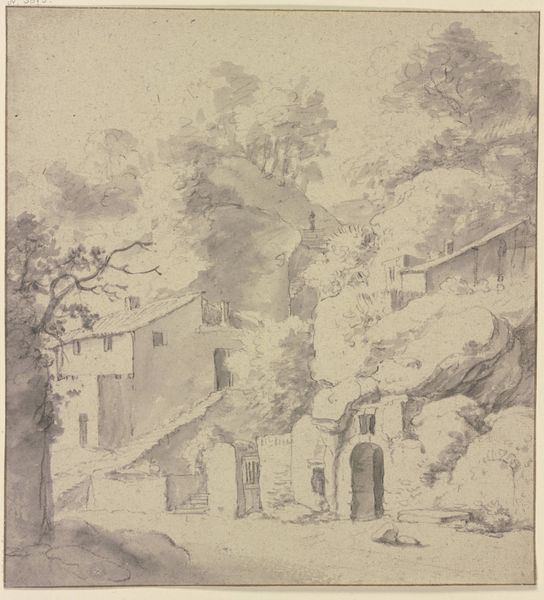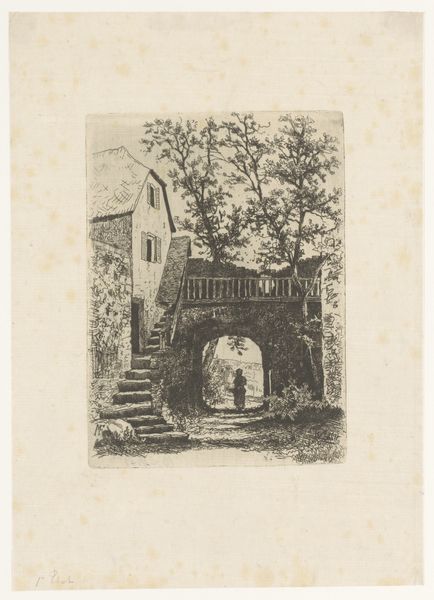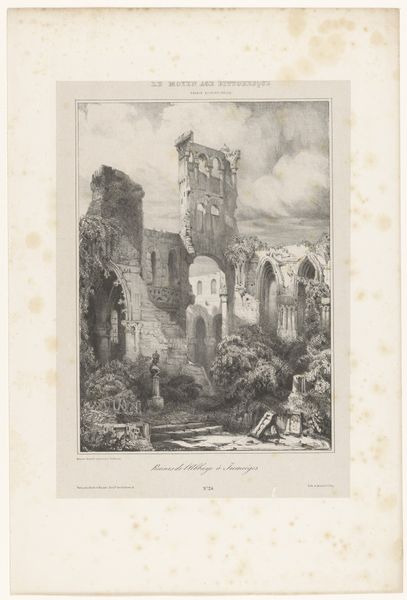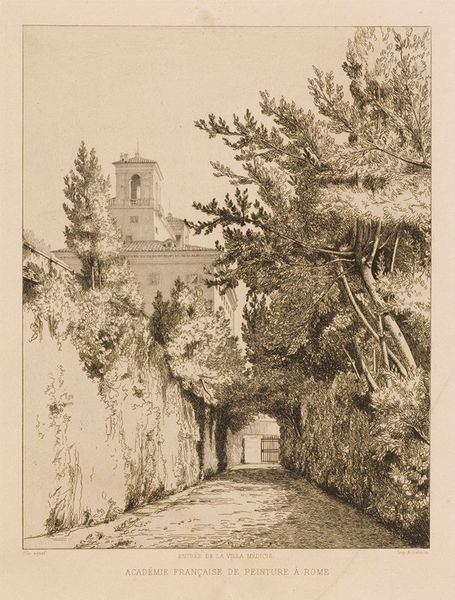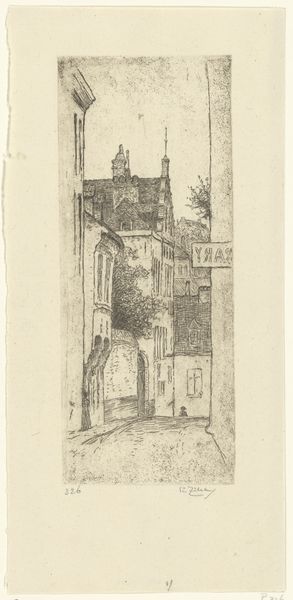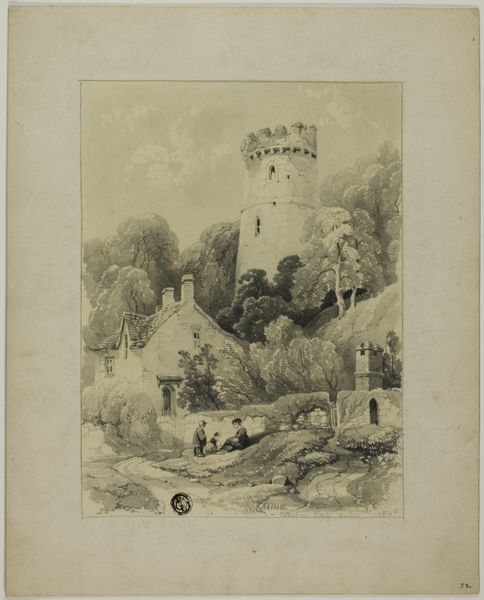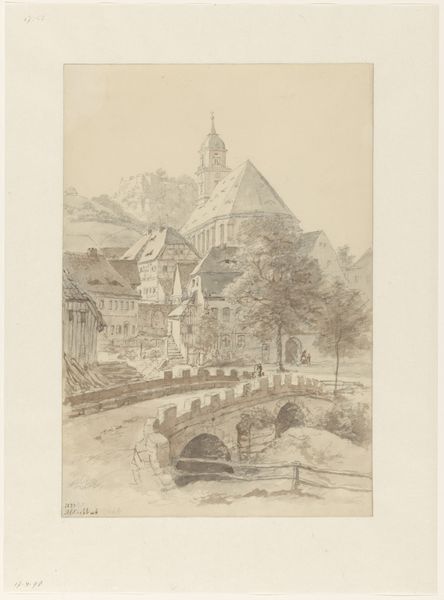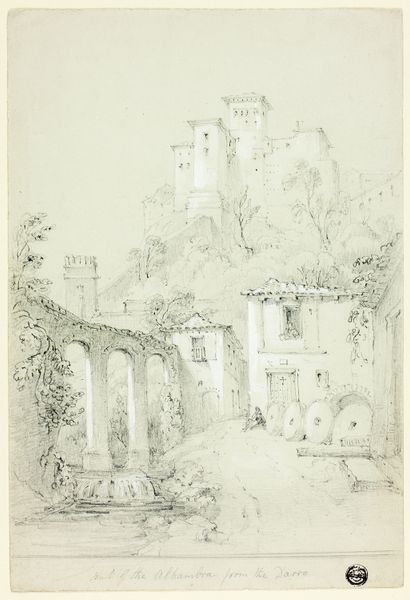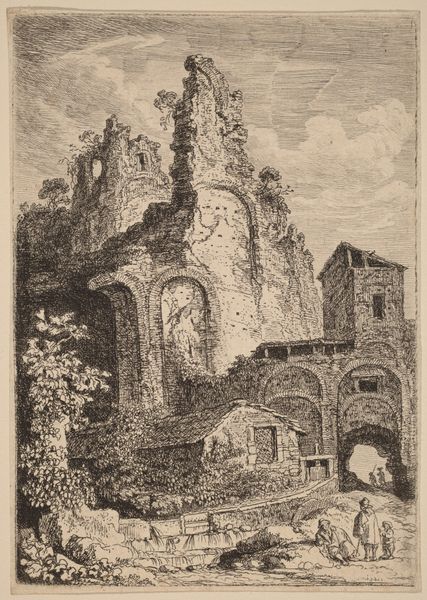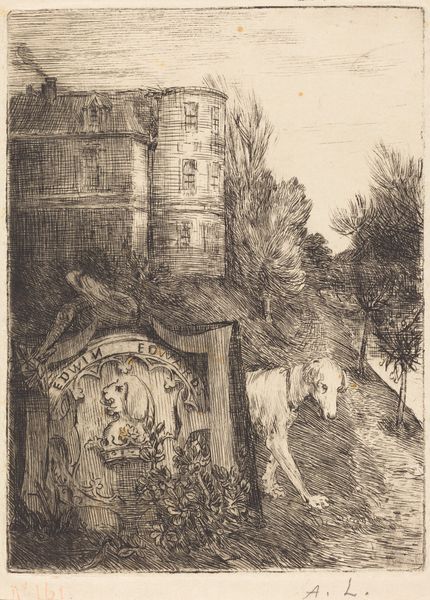
print, etching
etching
landscape
cityscape
genre-painting
realism
Dimensions: 320 mm (height) x 201 mm (width) (plademaal)
Curator: Let's consider Viggo Jastrau’s 1913 etching, "Kirkegavl," currently held in the Statens Museum for Kunst. What are your immediate reactions? Editor: The overwhelming feeling I get is one of domesticity clashing with something monumental, something almost…oppressive in its height. There's a subtle anxiety woven into what would otherwise be a simple, quiet scene. Curator: It is indeed a juxtaposition of scales and themes. Jastrau often explored such oppositions in his cityscapes. This etching really exemplifies the realist style of his period, capturing a slice of urban life but with a distinct atmosphere. The inclusion of genre-painting elements makes it all the more rich. Editor: Right, I am drawn to the woman in the scene; who is she? Why is she depicted carrying what looks like a tray of food through this almost hidden passage adjacent to such grandiose architecture? There's a social commentary begging to be explored. Is she perhaps a servant, existing in the shadows of the upper class's dwellings? Curator: Precisely. We have to consider the context. Early 20th century Copenhagen experienced rapid social change, a growing class divide, and increasing urbanization. Jastrau was a sharp observer of these shifting social dynamics. Note the meticulous details – the crumbling facades juxtaposed with flourishing greenery. The contrast underscores societal inequalities. Editor: I see it—this etching feels incredibly staged in its intimacy and domesticity in counterpoint to what feels like a distant castle. The level of detail is intriguing and forces you to confront uncomfortable issues on class and inequity, wouldn't you agree? Curator: I do agree that the detail calls one to examine society. While seemingly passive, I see "Kirkegavl" as actively engaging in dialogue regarding the state of a rapidly evolving world, with the art institution holding the keys to disseminate those dialogues with intention. Editor: The very act of recording the minutiae, these subtle hints of social stratification, acts as an assertion. And for that reason alone, it’s hard not to think of how applicable Jastrau’s work from a century ago remains to conversations concerning contemporary social disparity.
Comments
No comments
Be the first to comment and join the conversation on the ultimate creative platform.
